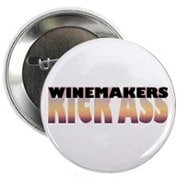
Is Pinot Noir becoming too popular? That is the question being asked by some of vineyard owners in California and Oregon. The primary concern is that due to the increased popularity of the grape, vineyards are planting vines with a focus on high production and low cost.
To illustrate this shift, Jason Lett, the owner of Eyrie Vineyards in Oregon confirmed that Pinot Noir vineyards were beginning to appear on the fertile valley floor of the Willamette Valley, rather than being restricted to the hillsides. “The battles dad fought about planting grapes in the right place are still being fought today,” he commented.
Many wine producers are staunchly against planting on the valley floor, where the grapes are more susceptible to frost and disease. Others say that the soil in the valley is not suitable for high-quality grape growing, and that the hillsides offer better drainage and better access to sunlight.
Click here for the full article from The Huffington Post.
My Thoughts…
I don’t think Pinot is really much different than any other grape, in that wineries will always produce bargain-basement wines from it. Maybe I’m just an idealist, but I firmly believe that the cream will always rise to the top!
I do worry though that people have come to come to expect certain attributes from Pinot Noir, and after mainly drinking “El Cheapo” Pinot for years, once they finally taste “the good stuff,” they often describe it as “thin and watery.” I know this first hand, as those are the comments I hear on a frequent basis at wine tastings. This in contrast to the cheaper brands of Pinot that use various “techniques” to achieve the taste they’re looking for.
I personally think that the wineries who are making high quality Pinot need to focus more on getting their “brand message” out there, and letting people know why their wine is better than the competition. This opposed to bitterly worrying about the guy across the street selling his for half the price. Someone-somewhere is ALWAYS going to be making a less expensive, and sometimes better (at least in the eyes of the consumer) version of the wine they are making. Wineries need to deal with it, and work on getting “the good word” out there!

















